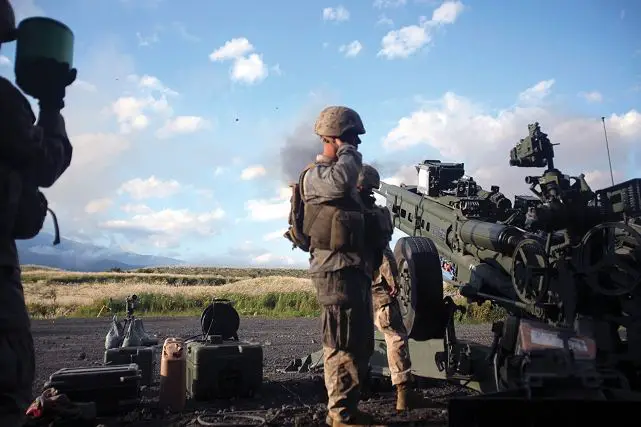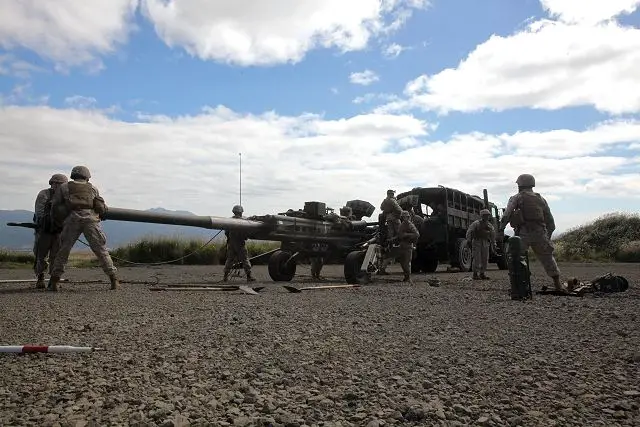| a | |||
U.S. marine with M777A2 howitzers in Japan |
|||
| Friday, January 15, 2013 11:37 AM | |||
| Field training fire in Japan for the U.S. Marines with M777A2 lightweight 155mm howitzers. | |||
More
than 400 United States Marines and sailors deployed Jan. 13-15 to Combined
Arms Training Center Camp Fuji, Shizuoka prefecture, Japan, to participate
in Artillery Relocation Training Program 13-4 with 155mm M777A2
lightweight howitzers. The program is a 17-year-old regularly
scheduled training cycle, which is designed to enhance the combat readiness
of U.S. Marine forces in support of the U.S.-Japan Treaty of Mutual Cooperation
and Security. |
|||
| |
|||
 U.S. Marines with Battery F fire an M777A2 155 mm lightweight howitzer during a live-fire training evolution at the East Fuji Maneuver Area by Combined Arms Training Center Camp Fuji Oct. 2 during Artillery Relocation Training Program 13-3, the most recent iteration of the program. |
|||
The
participating artillery Marines are currently assigned to 3rd Battalion,
12th Marine Regiment, 3rd Marine Division, III Marine Expeditionary Force.
During their time at CATC Camp Fuji, the service members will practice basic field training, fire M777A2 lightweight 155 mm howitzers, and execute small-arms live-fire training evolutions to maintain proficiency and enhance combat readiness. The unit also intends to participate in community relation events in the local area, according to 1st Lt. Gregory M. Scott, an artillery officer with Battery L. “It’s definitely going to be a new challenge for us,” said Scott. “Our Marines are definitely excited to be going on the program, but they are a little apprehensive because the snow and the cold are something we usually don’t get in (Marine Corps Air Ground Combat Center,) Twentynine Palms.” Not only will the unit be challenged by the training and weather, they will also face the daunting task of transporting its equipment long distances. “There is a huge difference from, figuratively speaking, shooting in your own backyard and moving your howitzers from one island to another,” said Maj. James S. Birgl, the executive officer of 3rd Bn., 12th Marines. “Not only do we improve the battery’s training and readiness standards, but the ARTP helps improve their logistics capabilities as well.” During their time at ARTP, the battalion leadership hopes to improve the capabilities of the batteries under its command, according to Birgl. “Our goal is to send the UDP batteries back to their parent commands in a better shape than when we received them,” said Birgl. “We want them to go back with a better knowledge of what it takes to fire the howitzers in various climates and how to employ them to accomplish their mission.” |
|||
 U.S. Marines with Battery F position an M777A2 155 mm lightweight howitzer Sept. 30 at Combined Arms Training Center Camp Fuji, Japan. |
|||
Field training fire in Japan for the U.S. Marines with M777A2 lightweight 155mm howitzers 1701141
- Posted On














